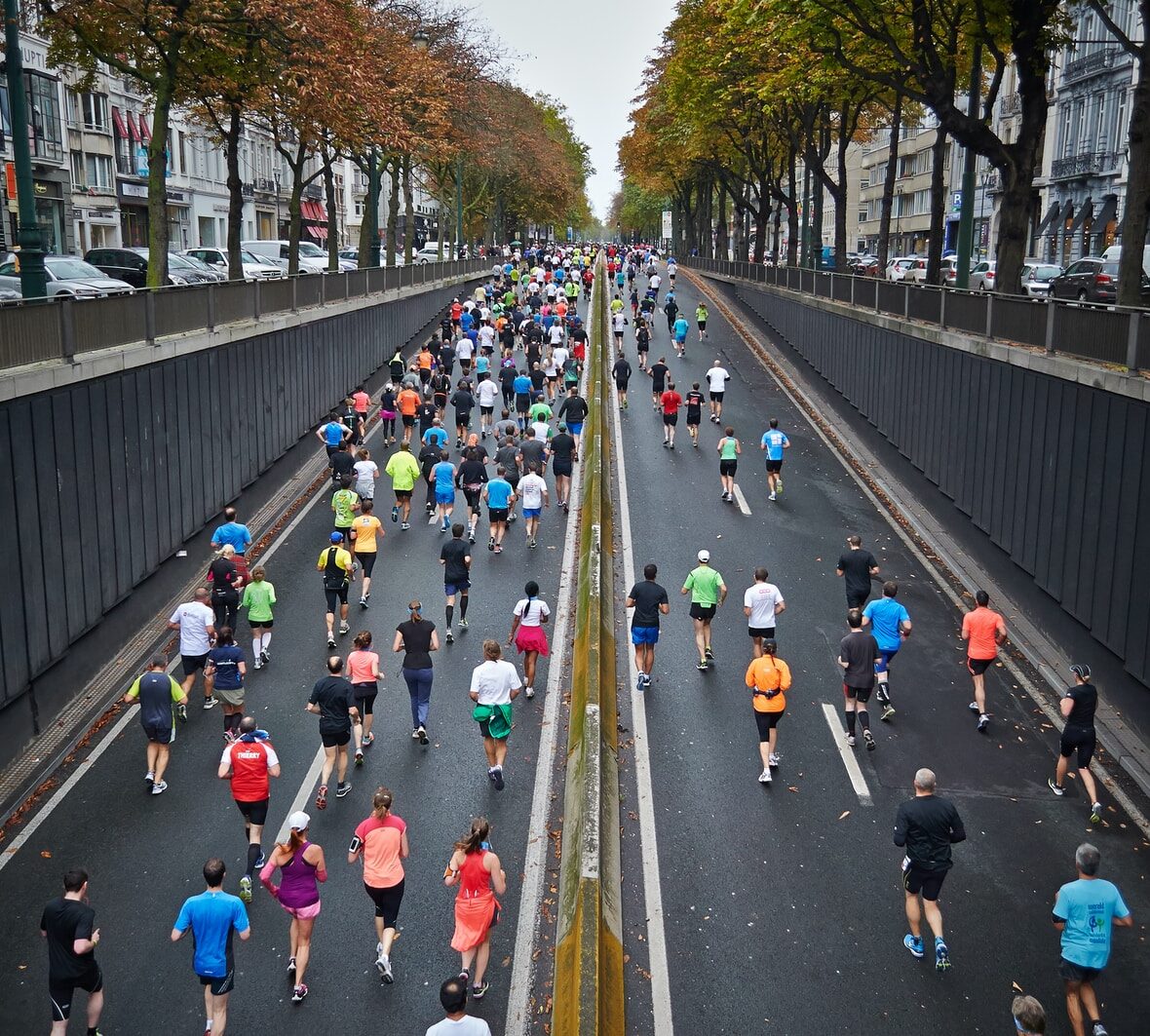
Have you ever wondered how much money a walkathon can actually raise? You might be surprised to learn that these seemingly simple events can generate impressive funds for charities and organizations! Picture this: a local school organizes a walkathon, and through community involvement, they manage to raise over $20,000 in just one day! 🌟
In this article, we’ll dive into the nitty-gritty of walkathon fundraising, exploring everything from historical insights to modern strategies that can help you maximize your earnings. We’ll also share inspiring examples of successful walkathons that have leveraged crowdfunding to reach new heights. Ready to lace up your sneakers and discover how much you could raise? Let’s take a walk together!
Key Takeaways
- Walkathons can raise anywhere from $5,000 to over $100,000, depending on various factors like participation and marketing.
- Inclusivity is key! Walkathons welcome participants of all ages and fitness levels, making them accessible to everyone.
- Community engagement plays a crucial role in the success of a walkathon, fostering a sense of belonging and shared purpose.
- Online fundraising platforms can significantly enhance your reach and make it easier for supporters to donate.
- Creative themes and fun elements can boost participation and excitement around your event.
Ready to kickstart your own fundraising journey? Check out these essential resources and products to help you plan a successful walkathon:
Let’s get walking! 🚀
Table of Contents
- Quick Tips and Facts About Walkathon Fundraising
- The History and Evolution of Walkathons
- Why Walkathons Are a Great Fundraising Strategy
- Who Should Host a Walkathon?
- Creative Walkathon Ideas and Themes to Boost Participation
- Step-by-Step Guide on How to Organize a Successful Walkathon
- Proven Strategies to Raise Money at Your Walkathon
- Walkathon Best Practices: Tips for a Smooth Event
- Inspiring Examples of Successful Walkathons That Used Crowdfunding
- Maximizing Your Fundraising: Additional Resources for Walkathon Success
- Conclusion
- Recommended Links
- FAQ
- Reference Links
Quick Tips and Facts About Walkathon Fundraising 🚶♀️🚶♂️💰
Did you know that walkathons have been around for over a century? 🤔 It’s true! These events, where people come together to walk and raise money for a good cause, have stood the test of time. Why? Because they work!
But before we dive into the how-to’s and why’s, let’s take a look at some quick tips and fascinating facts about walkathon fundraising:
- Fact: The first walkathon, called a “pedestrianism” event, was held in 1861. Learn more about the history of walkathons!
- Tip: Set a realistic fundraising goal that excites your participants. A good goal is ambitious yet attainable.
- Fact: Walkathons are a fantastic way to promote physical activity and raise awareness for important causes. Discover the health benefits of walking!
- Tip: Make it fun! Incorporate music, costumes, and themes to keep participants energized and engaged.
- Fact: Online fundraising platforms can significantly increase your reach and make it easier for people to donate.
- Tip: Don’t forget to thank your participants and donors! Gratitude goes a long way in building lasting relationships.
Ready to learn more about how to organize a successful walkathon and maximize your fundraising potential? Let’s go! 🚀
The History and Evolution of Walkathons 🕰️🚶♀️🚶♂️

The concept of a walkathon might seem like a modern invention, but its roots go surprisingly far back. The first recorded event resembling a walkathon took place in 1861 when Edward Payson Weston walked 478 miles from Boston to Washington D.C. in 10 days. 🤯 This feat of endurance, fueled by a bet and a desire to witness Abraham Lincoln’s inauguration, sparked public fascination with “pedestrianism.”
Over time, these long-distance walks evolved into organized events for charitable causes. In the 20th century, walkathons gained immense popularity as a fun and accessible way to raise funds and awareness.
From Typewriters to Touchscreens: The Digital Revolution in Walkathon Fundraising 💻➡️📱
Remember the days of collecting pledges with pen and paper? Thankfully, technology has revolutionized the way we fundraise! Online platforms and mobile apps have made it easier than ever to:
- Create and share personalized fundraising pages.
- Collect donations securely and efficiently.
- Track progress and analyze results.
- Engage with supporters and build community.
This digital transformation has significantly expanded the reach and impact of walkathons, allowing organizers to connect with a wider audience and raise more money for their causes.
Explore effective fundraising strategies for your walkathon!
Why Walkathons Are a Great Fundraising Strategy 👍💰
Walkathons offer a unique blend of benefits that make them an incredibly effective fundraising strategy for a wide range of organizations and causes. Here’s why:
1. Accessibility and Inclusivity 👨🦽👩🦯
Walkathons are inherently inclusive events. Unlike marathons or other physically demanding challenges, walkathons welcome people of all ages and fitness levels. This accessibility makes it easy for families, seniors, and individuals with disabilities to participate and contribute.
2. Community Building and Engagement 🤝❤️
Walkathons bring people together for a common purpose, fostering a sense of community and shared accomplishment. The act of walking side-by-side, sharing stories, and supporting one another creates lasting bonds and strengthens relationships.
3. Cost-Effectiveness and High ROI 💰📈
Compared to other fundraising events, walkathons are relatively inexpensive to organize. With careful planning and resource allocation, you can maximize your return on investment and direct a larger portion of the funds raised to your cause.
4. Amplified Awareness and Visibility 📣📢
Walkathons provide a fantastic platform to raise awareness for your cause. The visual spectacle of participants walking together, often wearing branded apparel or carrying banners, attracts attention and sparks conversations.
Learn more about what a walkathon is and how it works!
Who Should Host a Walkathon? 🤔🏢
Walkathons are a versatile fundraising tool that can be adapted to suit the needs of various organizations and causes. Here are a few examples:
- Nonprofit Organizations: Walkathons are a cornerstone of fundraising for countless nonprofits, helping them secure vital resources to support their missions.
- Schools and Universities: From funding field trips to upgrading facilities, walkathons are a popular choice for educational institutions looking to engage students, parents, and staff in fundraising efforts.
- Community Groups: Walkathons bring neighbors together to support local initiatives, improve public spaces, or assist families in need.
- Health-Related Organizations: Walkathons align perfectly with the missions of health-focused organizations, promoting physical activity while raising funds for research, treatment, and prevention programs.
Discover helpful tips for event registration!
Creative Walkathon Ideas and Themes to Boost Participation 🎨👟
To keep the excitement alive and encourage higher participation, consider implementing creative themes and ideas for your walkathon! Here are some fun suggestions:
- Color Run: Participants wear white and get splashed with colorful powders.
- Superhero Walk: Encourage participants to dress as their favorite superheroes.
- Historical Walk: Participants dress in costumes from a specific era.
- Pet Walk: Invite participants to walk with their pets, raising awareness for animal-related causes.
- Glow in the Dark Walk: Host an evening event where participants wear glow sticks and neon colors.
These themes not only make the event more enjoyable but also create memorable experiences that participants will want to share!
Step-by-Step Guide on How to Organize a Successful Walkathon 📋👣
Organizing a walkathon can seem daunting, but with a clear plan, you can make it a success! Here’s a step-by-step guide to help you get started:
- Set a Date and Location: Choose a date that doesn’t conflict with major events and find a safe route for participants.
- Define Your Goals: Determine how much money you want to raise and set clear objectives.
- Engage Volunteers: Recruit a team to help with planning, marketing, and day-of-event management.
- Create a Marketing Plan: Use social media, local newspapers, and community boards to spread the word.
- Utilize Online Fundraising Platforms: Set up a fundraising page where participants can collect donations.
- Plan the Event Logistics: Ensure you have permits, water stations, first aid, and signage in place.
- Celebrate and Thank Participants: After the event, acknowledge everyone’s efforts and share the impact of their contributions.
By following these steps, you’ll be well on your way to hosting a successful walkathon that raises funds and builds community!
Proven Strategies to Raise Money at Your Walkathon 💵🚀
To maximize your fundraising efforts, consider these proven strategies:
- Pledge Drives: Encourage participants to gather pledges from friends and family for each mile walked or lap completed.
- Corporate Sponsorships: Reach out to local businesses for sponsorship opportunities in exchange for promotional benefits.
- Merchandise Sales: Sell t-shirts, water bottles, or other branded items to raise additional funds.
- Post-Walk Celebration: Host a fun post-walk event with food, entertainment, and opportunities for further donations.
- Social Media Challenges: Create challenges that encourage participants to share their fundraising pages on social media.
Implementing these strategies can significantly enhance your fundraising potential!
Walkathon Best Practices: Tips for a Smooth Event ✅✨
To ensure your walkathon runs smoothly, here are some best practices to keep in mind:
- Communicate Clearly: Keep participants informed about event details, including routes, times, and safety measures.
- Provide Support: Have volunteers available to assist participants and address any concerns during the event.
- Ensure Safety: Prioritize safety by securing permits, having first aid kits on hand, and establishing clear routes.
- Document the Event: Capture photos and videos to share on social media and showcase the impact of the walkathon.
- Follow Up: After the event, send thank-you notes to participants and donors, and share the results of your fundraising efforts.
By focusing on these best practices, you’ll create a memorable experience for everyone involved!
Inspiring Examples of Successful Walkathons That Used Crowdfunding 🌟💪
Let’s take a look at some real-life examples of walkathons that have successfully leveraged crowdfunding:
- The Susan G. Komen Race for the Cure: This iconic event has raised millions for breast cancer research through participant-driven fundraising.
- The American Heart Association’s Heart Walk: This annual event encourages participants to raise funds through personal fundraising pages, contributing to heart disease research and education.
- The MS Walk: Organized by the National Multiple Sclerosis Society, this event empowers participants to raise funds through pledges, significantly impacting MS research and support services.
These examples illustrate how effective crowdfunding can be in driving walkathon success!
Maximizing Your Fundraising: Additional Resources for Walkathon Success 📚💡
To further enhance your fundraising efforts, consider utilizing these additional resources:
These resources can provide you with valuable insights and tools to take your walkathon to the next level!
Conclusion 🎉

In summary, walkathons are not just a fun way to get moving; they’re a powerful fundraising tool that can significantly benefit your organization. With their rich history, accessibility, and ability to foster community spirit, walkathons offer a unique combination of advantages.
Positives:
- Inclusivity: Everyone can participate, regardless of fitness level.
- Community Engagement: They create a sense of belonging and shared purpose.
- Cost-Effectiveness: They require minimal investment for potentially high returns.
- Awareness Building: They shine a spotlight on important causes.
Negatives:
- Weather Dependency: Outdoor events can be affected by inclement weather.
- Logistical Challenges: Organizing a large group requires careful planning and management.
- Potential for Low Turnout: If not marketed well, participation might fall short of expectations.
Ultimately, if you’re looking to raise funds while promoting health and community spirit, we confidently recommend organizing a walkathon! It’s a win-win for both your organization and the participants. So, lace up those sneakers and get started! 👟💪
Recommended Links 🛍️
FAQ ❓

How does a walkathon raise money? 💵
A walkathon raises money primarily through pledges and donations. Participants gather pledges from friends, family, and community members, who agree to donate a certain amount for each mile walked or lap completed. Additionally, organizers may charge a registration fee to participate, which can further contribute to the fundraising total.
How much does the average fundraiser raise? 📊
The amount raised by a walkathon can vary widely based on factors such as the cause, the number of participants, and the marketing efforts involved. On average, successful walkathons can raise anywhere from $5,000 to $50,000 or more! With effective planning and outreach, some events have even exceeded $100,000.
How do people raise money by walking? 🚶♀️💰
Participants raise money by soliciting pledges—commitments from friends, family, and colleagues to donate a specific amount based on their walking distance. They can also set up online fundraising pages to make it easy for supporters to donate directly. Sharing their fundraising goals on social media can amplify their reach and inspire more contributions.
What fundraiser raises the most money? 💸
While many fundraisers can be lucrative, events like gala dinners, silent auctions, and walkathons are often among the top performers. Walkathons, in particular, can be highly effective due to their community involvement and the ease of collecting pledges. However, the success of any fundraiser largely depends on planning, marketing, and participant engagement.
What are some creative themes for walkathons? 🎨
Creative themes can boost participation and enthusiasm! Some popular ideas include:
- Color Runs: Participants wear white and get splashed with colorful powders.
- Superhero Walk: Encourage participants to dress as their favorite superheroes.
- Historical Walk: Participants dress in costumes from a specific era.
- Pet Walk: Invite participants to walk with their pets, raising awareness for animal-related causes.
Reference Links 🔗
- Fundly: Walkathon Fundraising Tips
- 99 Pledges: Walk-a-thon Fundraiser
- Walkathon Benefits: What is a Walkathon?
- Health Benefits of Walking
- Fundraising Strategies
With this knowledge in hand, you’re well-equipped to plan your own successful walkathon! Happy walking! 🚶♂️🎉
